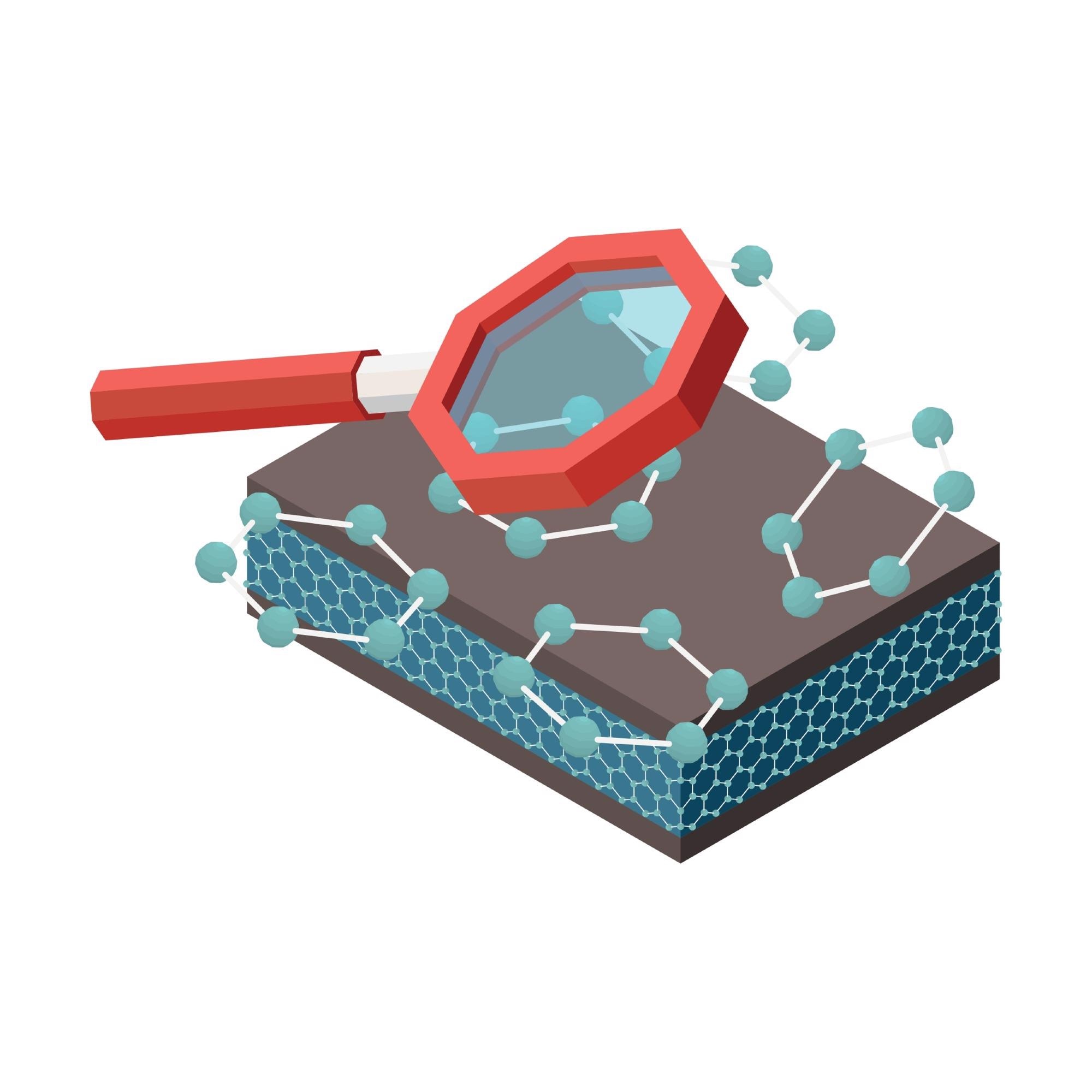Due to their ease of production and high sensing capability, piezoresistive sensors are the most extensively utilized sensing devices in adaptable strain detection systems. The creation of a flexible polyvinylidene fluoride (PVDF) nanofibre/graphene sponge sensor with excellent responsiveness, broad detection range, and high stability is the focus of a new study published in the journal Sensors and Actuators A: Physical.

Study: Preparation of multi-axial compressible 3D PVDF nanofibre/graphene wearable composites sensor sponge and application of integrated sensor. Image Credit: Macrovector/Shutterstock.com
Significance of Three-Dimensional (3D) Nano Sponge Sensors
When pressure is applied to three-dimensional (3D) sponge detectors with permeable architectures, modifications in their morphology occur. Various electrical impulses may be reflected, and this improved functionality can suit the needs of wearable piezoresistive sensing devices. These sensors possess a basic structure, remarkable responsiveness, and a cheap processing cost.
Regarding responsiveness, stress response spectrum, and reaction time, nanotechnology stress detectors offer greater and more reliable functionality. These sensors also display the features of multi-functional stress detection, which are better suited for the latest sensor research and development.
Current Preparation Methods and Their Limitations
Pattern sponge-based construction and freeze-drying procedures are typical production methods for three-dimensional (3D) sponge detectors. After soaking the conducting substrates, the sponge pattern assembly technique attempts to carbonize or dissolve the spongy templates. On the other hand, the freeze-drying process is intended to sublimate the liquid crystals and generate a porous 3D sponge architecture.
The 3D sponge detectors created using these approaches exhibit a limited effective surface size and the physical toughness of the sponge has to be improved. The potential uses of 3D sponges are restricted due to their low elastic modulus, toughness, and rigidity.
Flexible Matrix and Nanofillers for 3D Sponge Sensors
To widen the applicability of these sensors in wearable technology, a stress detector with superior electrical efficiency and outstanding mechanical qualities must be designed. A flexible network can increase the sensor's elastic modulus, adaptability, and robustness. The selection of the 3D sensing sponge's conducting filler is also crucial in affecting conduction and detection capability.
Different conducting fillers and elastic matrix composites, along with different preparation techniques, can result in differences in the sensor's detecting capability, such as stress measuring ranges, responsiveness, and percolation limit. Graphene, as a versatile conducting matrix, offers higher electrical conductance and is easier to process into a diverse form than carbon nanostructures and permeable carbon materials.
In addition to selecting a suitable conducting surface, increasing the effective contact area of the sponge sensor is also critical. This may be accomplished by using electrospun nanofibers.
The fluoroplastic nanofiber polyvinylidene fluoride (PVDF) has great tensile toughness, hardness, impact resistance, and fatigue strength. Furthermore, the solution approach paired with electrospinning is a reasonably simple and cost-effective way of producing PVDF nanofibers.
A Novel 3D Nanofibre/Graphene Sponge Sensor
A multi-axial compressible 3D graphene/nanofibre sponge sensor for wearable devices was produced in this study. Several sensors were also assembled to maximize sensing capability via synergistic effects.
The diced electrospun PVDF nanofibers were employed as reinforcements in the sponge production technique, while graphene oxide (GO) nanosheets were utilized as an elastic substrate. The resistance and responsiveness may be successfully changed by adjusting the weight distribution of PVDF nanofibers and GO nanosheets.
Key Developments of the Study
The detection device developed in this study is a multipurpose wearable sensor with excellent sensitivity, a broad detection range, and excellent resilience. The results suggest that adding too much graphene enhances pore structure dramatically. The thicker permeable wall generated by the intertwining of graphene nanosheets increases the sensor's mechanical properties.
The sponge detector also has outstanding elasticity, with an elastic restoration rate of up to 90%, where the compression is more than 80%. It also exhibits a broad detection range when squeezed in various directions.
Multiple sponge sensors were connected by a bridge circuit, and the piezoresistive efficiency of the combined sensors was calculated by computing the corresponding resistance. The incorporation of numerous sponge detectors in a bridge circuit boosted the total responsiveness of the sensing device under the given compression ratio.
The present work is expected to create a research basis for using multi-mode piezoresistive sensors in the area of smart wearables electronics.
Reference
Miao, Y. et al. (2022). Preparation of multi-axial compressible 3D PVDF nanofibre/graphene wearable composites sensor sponge and application of the integrated sensor. Sensors and Actuators A: Physical. Available at: https://www.sciencedirect.com/science/article/pii/S0924424722002862?via%3Dihub
Disclaimer: The views expressed here are those of the author expressed in their private capacity and do not necessarily represent the views of AZoM.com Limited T/A AZoNetwork the owner and operator of this website. This disclaimer forms part of the Terms and conditions of use of this website.